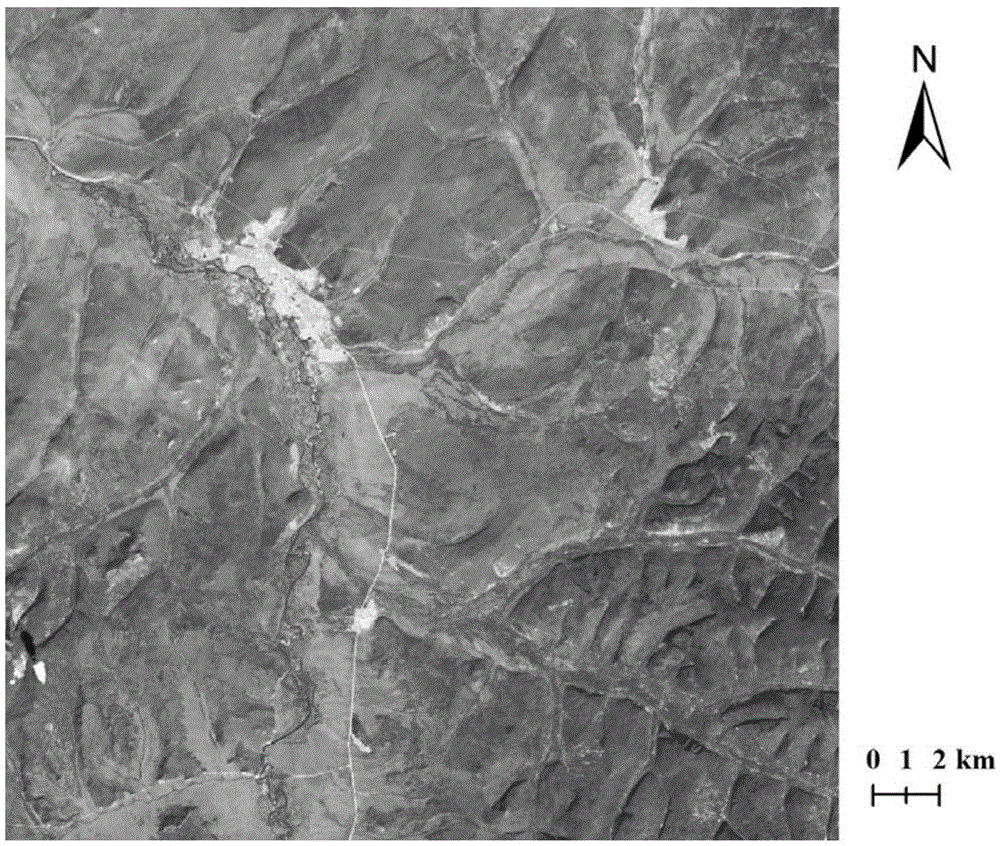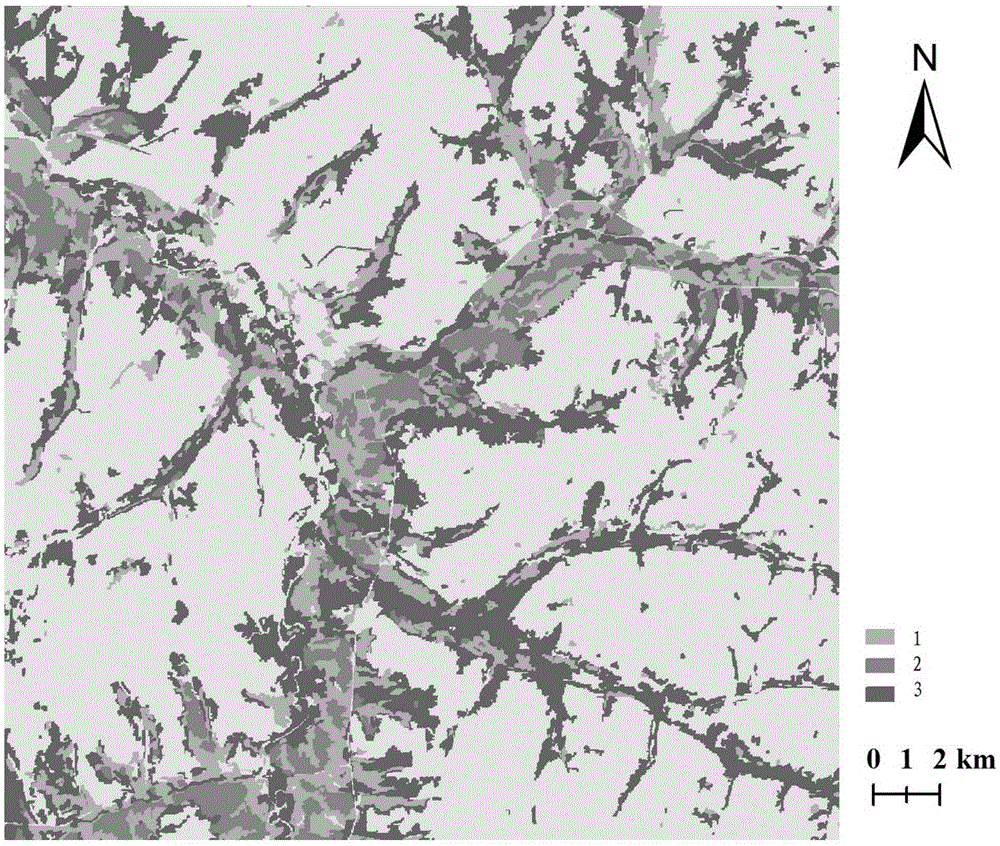Marsh wetland mapping method based on object-oriented random forest classification method and medium-resolution remote sensing image
A random forest, object-oriented technology, applied in special data processing applications, instruments, electrical digital data processing, etc., can solve the problem of inaccurate extraction of grass swamp, scrub swamp and forest swamp spatial information, etc. The effect of clarifying geographic significance
- Summary
- Abstract
- Description
- Claims
- Application Information
AI Technical Summary
Problems solved by technology
Method used
Image
Examples
specific Embodiment approach 1
[0046] Specific implementation mode one: the method for swamp wetland mapping based on the object-oriented-random forest classification method and medium-resolution remote sensing images of this embodiment is carried out according to the following steps:
[0047] 1. Carry out radiometric calibration, atmospheric correction, orthorectification, geometric fine correction and projection transformation on Landsat-8OLI data;
[0048] 2. Collect slope, topographic humidity index based on digital elevation model (DEM) and brightness, greenness and humidity auxiliary data obtained based on tasseled cap transformation;
[0049]3. With the support of eCognition8.64 software, the Landsat-8OLI image and auxiliary classification data are segmented into multiple layers and multi-scales. The eCognition8.64 software comes with a multi-scale segmentation algorithm, which can divide the remote sensing image into a series of homogeneous units, namely Object, to obtain a series of segmentation un...
specific Embodiment approach 2
[0079] Embodiment 2: The difference between this embodiment and Embodiment 1 is that the Landsat-8OLI data in Step 1 is that the track number is P122R23, and the time is August 31, 2015. Other steps and parameters are the same as those in the first embodiment.
specific Embodiment approach 3
[0080] Specific embodiment three: the difference between this embodiment and specific embodiment one is that in step one, radiation calibration, atmospheric correction, orthorectification, geometric precision correction and projection conversion are carried out as follows: use ENVI5.1 software The FLAASH module performs atmospheric correction on the Landsat-8OLI image; uses the DEM data of the test area to perform orthorectification on the atmospherically corrected image; in order to eliminate geometric distortion, use the 1:50000 terrain data to select the ground control points in the ERDAS9.2 software, Perform geometric fine correction on the orthorectified image. Other steps and parameters are the same as those in the first embodiment.
PUM
 Login to View More
Login to View More Abstract
Description
Claims
Application Information
 Login to View More
Login to View More - R&D
- Intellectual Property
- Life Sciences
- Materials
- Tech Scout
- Unparalleled Data Quality
- Higher Quality Content
- 60% Fewer Hallucinations
Browse by: Latest US Patents, China's latest patents, Technical Efficacy Thesaurus, Application Domain, Technology Topic, Popular Technical Reports.
© 2025 PatSnap. All rights reserved.Legal|Privacy policy|Modern Slavery Act Transparency Statement|Sitemap|About US| Contact US: help@patsnap.com



